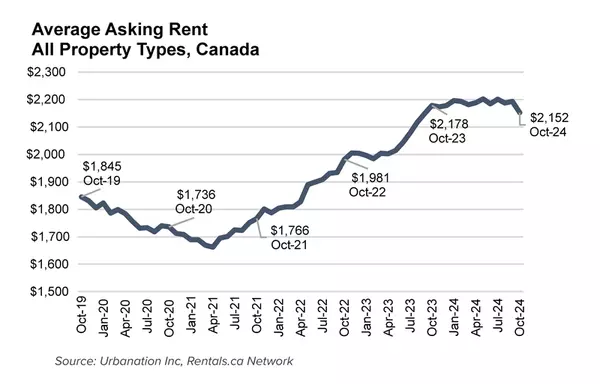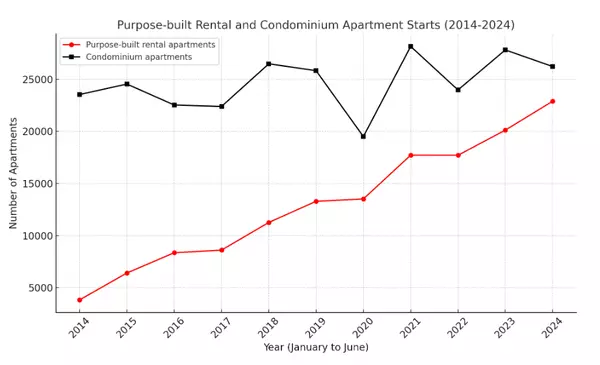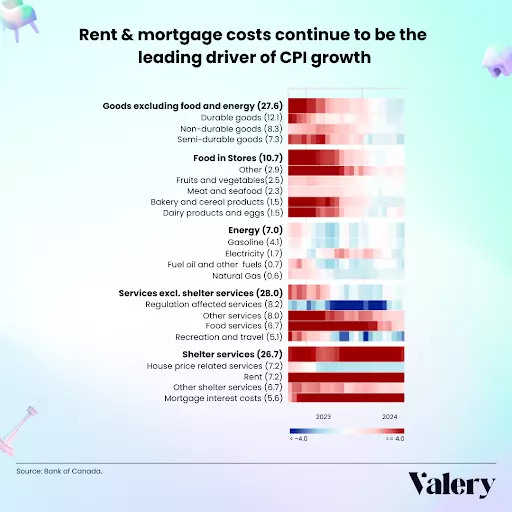Leaving the ‘Waiting Room’ for lower policy rate: What the Bank of Canada needs to make it happen
“I am a patient boy, I wait, I wait, I wait, I wait …” This opening line to the classic 1988 punk-rock anthem Waiting Room, by Fugazi, expresses a sentiment currently felt across the Canadian housing market as we wait on the Bank of Canada.
Indeed, there’s a pervasive belief that until the Bank cuts its policy rate, potential homebuyers will be content to stay on the sidelines, and buyers may be extra hesitant given the Bank’s pause followed by further rate hikes last year. Even a significant drop in fixed mortgage rates since the beginning of the year has not provided its usual boost to demand.
So, what is the Bank of Canada waiting for and what do they need to see before finally loosening the reins of monetary policy?
We need a sustained inflation trend at or near 2% target
The answer is straightforward. The Bank of Canada is mandated by the federal government to keep inflation within a one to three per cent band with a target of inflation at two per cent over a medium-term horizon. While it’s true that the 12-month change in headline Consumer Price Index (CPI) fell to 2.7 per cent in April 2024, the Bank needs to see a sustained trend of inflation at or very near its target before feeling comfortable taking its foot off the brakes of the economy.
However, a strong argument can be made that inflation is already quite a bit weaker than what headline CPI or even core inflation measures indicate. The reason lies in the impact and source of shelter cost inflation.
Shelter costs rising due to factors outside Bank of Canada’s reach
Shelter costs account for close to 30 per cent of the CPI, the largest share of which is from ownership costs like mortgage payments and home prices, with the remaining weight assigned to rental costs. Shelter inflation is currently running at about 6.5 per cent year-over-year.
If this elevated rate of shelter inflation were due to overheated demand from an economy generating outsized job growth and income gains, there would be an obvious role for monetary policy to slow things down. However, shelter costs are rising due to factors outside the reach of the Bank of Canada.
Record high net migration of non-permanent residents pushed up demand for rental housing, while the Bank’s own interest rate hikes drove mortgage payments much higher. On the supply side, elevated borrowing costs for developers may impede new housing starts and prevent new supply from getting to the market, ultimately raising pressure on the existing housing stock.
None of these causes of shelter inflation are helped by keeping interest rates elevated. If shelter costs are excluded, inflation in Canada is trending at just 1.2 per cent over the past 12 months and well under 1.0 per cent on a three-month annualized basis. By that measure, the Bank is already in danger of falling behind the curve on inflation, causing unnecessary harm to Canadian households by holding rates high amid low and falling non-shelter inflation.
Amount to cut determined by economy in equilibrium
As the case solidifies for the Bank to cut rates, the next question becomes: cut by how much? The answer can be found in the Bank’s estimate of its “neutral rate” or, in plain language, the level of the Bank’s policy rate such that the economy is in “equilibrium” (everyone joining hands and buying the world a Coke, cats and dogs living together in harmony, Maple Leaf and Canadians fans sharing a beer … that kind of thing).
The Bank estimates that equilibrium occurs when its policy rate is between 2.25 per cent and 3.25 per cent, with a likely long-run destination right in the middle of that range at 2.75 per cent. The Bank likes to move cautiously, generally in 25-basis point increments, to evaluate the impact of changing monetary policy on the economy. That likely means returning to 2.75 per cent over a two-year horizon.
Fixed mortgage rates likely to stay put
Now for the bad news — the bond market, and by association, the mortgage market, is a machine that digests all available information about current and future economic conditions. Since late 2023, markets have strongly anticipated falling policy rates. As a result, five-year fixed mortgage rates have likely already priced in the entirety of expected rate cuts.
This means that even as the Bank of Canada starts to lower its policy rate, there may be very little downward movement in five-year fixed mortgage rates from where they are now, at close to five per cent.
So, returning to our friends from Fugazi, this might be as good as it gets for mortgage rates. Perhaps it’s time for both the Bank of Canada and potential homebuyers and sellers to move on and get up from the waiting room.
Please note that it is BCREA policy to not respond to comments on any of its online articles.
Categories
Recent Posts










GET MORE INFORMATION


